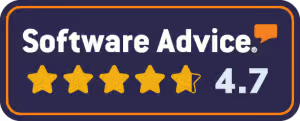In the fast-paced world of sales, having a great team and commission structure is just the beginning. To succeed, you need a game plan that encourages your sales reps to go above and beyond and helps you track their success. That’s where the power of goals comes in. having your team set their own goals for the year and for each month, you’re giving them by-in to the numbers they’ll be held accountable to, and creating a culture that keeps them motivated for getting there.
In this article, Cassandra Fortson, Sales and Marketing Coordinator at Texas Monthly, shares how her team sets goals, keeps track of progress throughout the year, and offers incentives for reaching their goals.
Setting Goals and Maintaining Goals
At Texas Monthly, sales reps are given a goal sheet and encouraged to set their own goals for the year and for each month. “We do our budget process, and once the budget is cleared, everybody is given their goal sheet. We use Excel for that. Then, all of our employees set a goal for each month. We have a goal for our digital sales, our print sales, our custom sales, and our television ad sales. It then all gets entered into the platform we use, MediaOS.”
Then, as time progresses, Fortson keeps track of how close each rep is to hitting their goals, and shares the information with the team. “At the close of each print issue, I send out a goal standing report and a digital open inventory, so people can see what is left available as well as whether they’re close to hitting goal and where they’re tracking.”
Fortson emphasized that during the whole goal setting process, transparency and consistency are key to keeping their sales reps motivated. “We try to keep it as transparent as possible on where everybody is to their goals, what everybody’s goals were, and then what we have available for them to meet that goal.”
The team also leans into real-time adjustments and creating additional opportunities for reps to hit their goals or go beyond.
“With print, we have an unlimited inventory with a limited inventory, if that makes sense. There’s only so many covers. So if we have a cover open up or we have a change in content where we know this is going to be a big deal, we’ll send that out with everybody’s goal settings. That way, they see here’s this open opportunity. Here’s where I am to my goals. Could this opportunity help me also meet my goal?”
Offering Incentives for Hitting and Surpassing Goals
Fortson shared the base percentage for when incentives kick in and the two most noteworthy incentives reps receive for surpassing their goals. “You need to make 60% of your goals consistently to be eligible for any higher incentives. We give out awards at our sales meeting at the end of the year, based on if certain goals were met. Whoever just blows their goal out of the water and gets the highest percentage, now gets the El Capitan award. They get that moniker for the next year. That’s more in our HR morale wheelhouse.
Bringing in more than 125% of their goal, means a trip at the end of the year. “If you go above 125% of your goal, you get a trip. Like this year, I think some of the ladies went to London, some went to Mexico.”
Using Goals to Incentivize and Track Progress
This goals program works double, as both an incentive and as a tracking program. When sales reps aren’t meeting their goals, it helps the larger team analyze the situation and figure out what’s missing—and make sure the sales rep is actually set up for success.
“We also use it as a bench mark if somebody isn’t hitting 60% or higher of their goal, that allows our sales manager team to start investigating. Do we have enough products for them to sell? Is there an inventory issue? Is there something we need to change on the back end to get them to meeting these sales, or do they need sales coaching? do they have enough territories? What can we do to help them meet their goals?”
If it turns out to be an employee consistently struggling to reach their goals, then sales coaching and one-on-one support steps in. “If someone’s consistently not making it, that’s when our National Sales Manager would check in and start doing some sales coaching, that’s a signal to her.”
However, if multiple sales reps aren’t hitting goal, the program helps to signal that something greater needs to be addressed. “Our executive team uses it in two ways—as an incentive program, and then also as a benchmark for our products in general. If nobody is hitting 70 to 80% of their goal, it signals to us we need to look at our products, look at the inventory, and make sure we actually have the right stuff for them to hit that goal,” she explained.
Setting Goals for Non Sales Teams
For other, non-sales teams in the company, goals look slightly different since they’re not as heavily based on commission and reaching quotas.
“Our executives have goals that have to do with all of the revenue streams since some of our revenue streams aren’t sales facing necessarily. So they have overarching goals. Our integrated marketing managers also have goals based on total sales that actually get booked, but they don’t necessarily get tracked the same way. We very much lean more heavily on the MediaOS goal tracking for our sales reps.”
Flexible Goals Helped to Navigate Interruptions and Reset the System
“During COVID, we slightly changed things up,” Fortson explained. “We set a new benchmark for how low sales could be, just because the notion was ‘Hey, everybody’s just been set back 20%.’”
Coming out of COVID, Fortson shared how the team relied on their previous goal tracking measurements to reset the goals and find a new normal. “Coming out of COVID was a little tricky,” Fortson recalled, “Because you had this two year gap of, you know, non-normal times. So we had to go back to later data to figure it out.”
Having that previous data helped the team have a benchmark for setting some post-COVID goals, based on real data.
“Going in, nobody knew what was going to happen. Then coming out, we had another, well, what are we comparing it to? Are we comparing it to our COVID sales? Or do we need to go further back? So we gave a little bit of room with our goals to make sure we weren’t penalizing or setting a benchmark that didn’t have any real world data behind it.”
Experience Share Q&A: Cassandra Fortson
Q: Do you have any advice for setting goals to incentivize employees?
A: Transparency is key. Just being as absolutely transparent about your goals, what you think is a benchmark for high sales, what you think a benchmark is for low sales. Just be very transparent, and make sure your team knows exactly what they’re being held to from the beginning. Keep it consistent, and keep it transparent. Then, if any changes need to be made throughout the year, make sure you’re consistent with all your sales reps and products with that change.
Q: Have you made any changes recently to your incentivization program?
A: We have made some changes, like we’re no longer doing the trips at the end of the year. It’s going to just be a flat dollar amount, but given as a gift card of sorts. That way, it doesn’t count against them with taxes. We’re changing that because it got a little complicated post-COVID to get everybody booked. Other than that, it’s pretty much the same.






